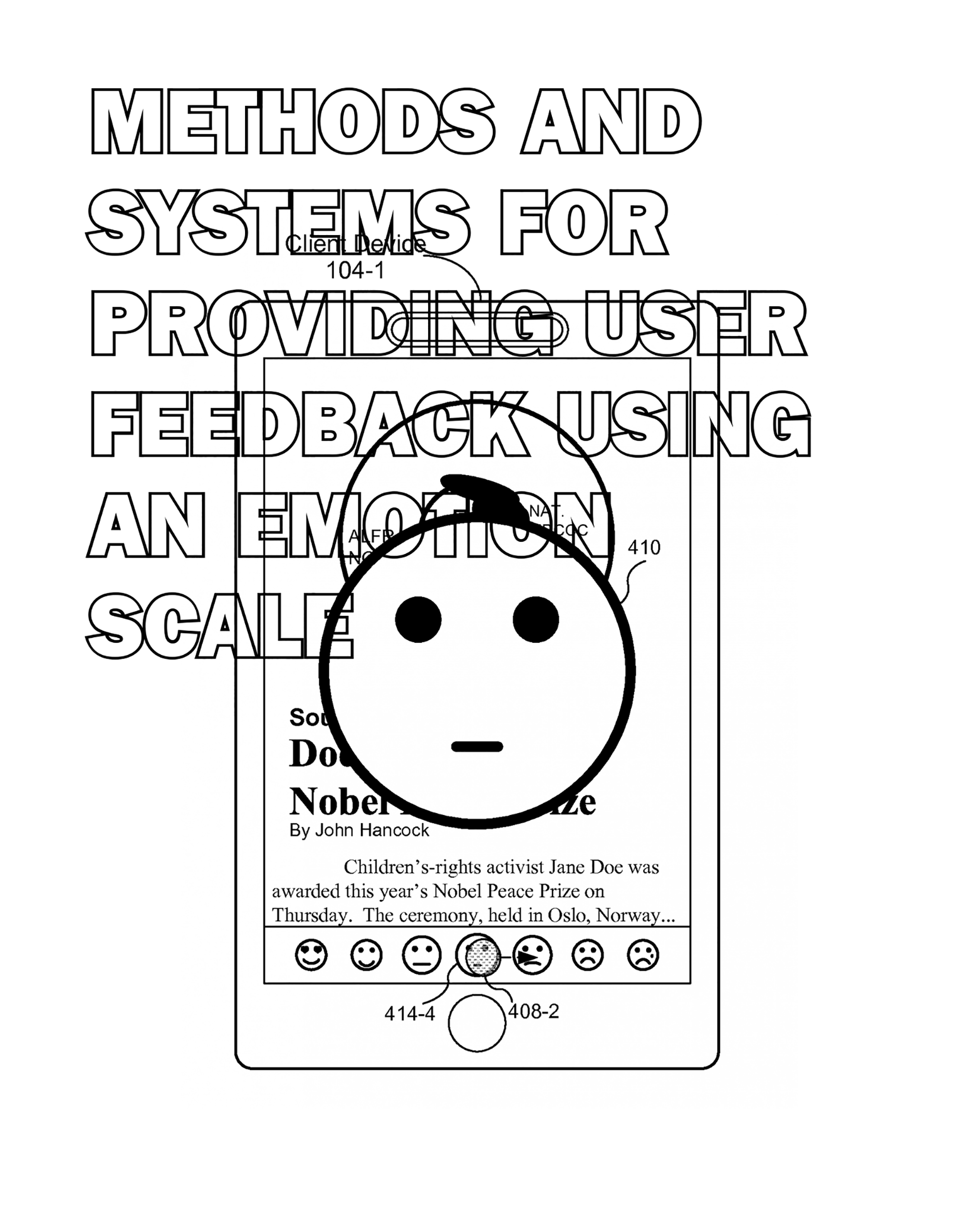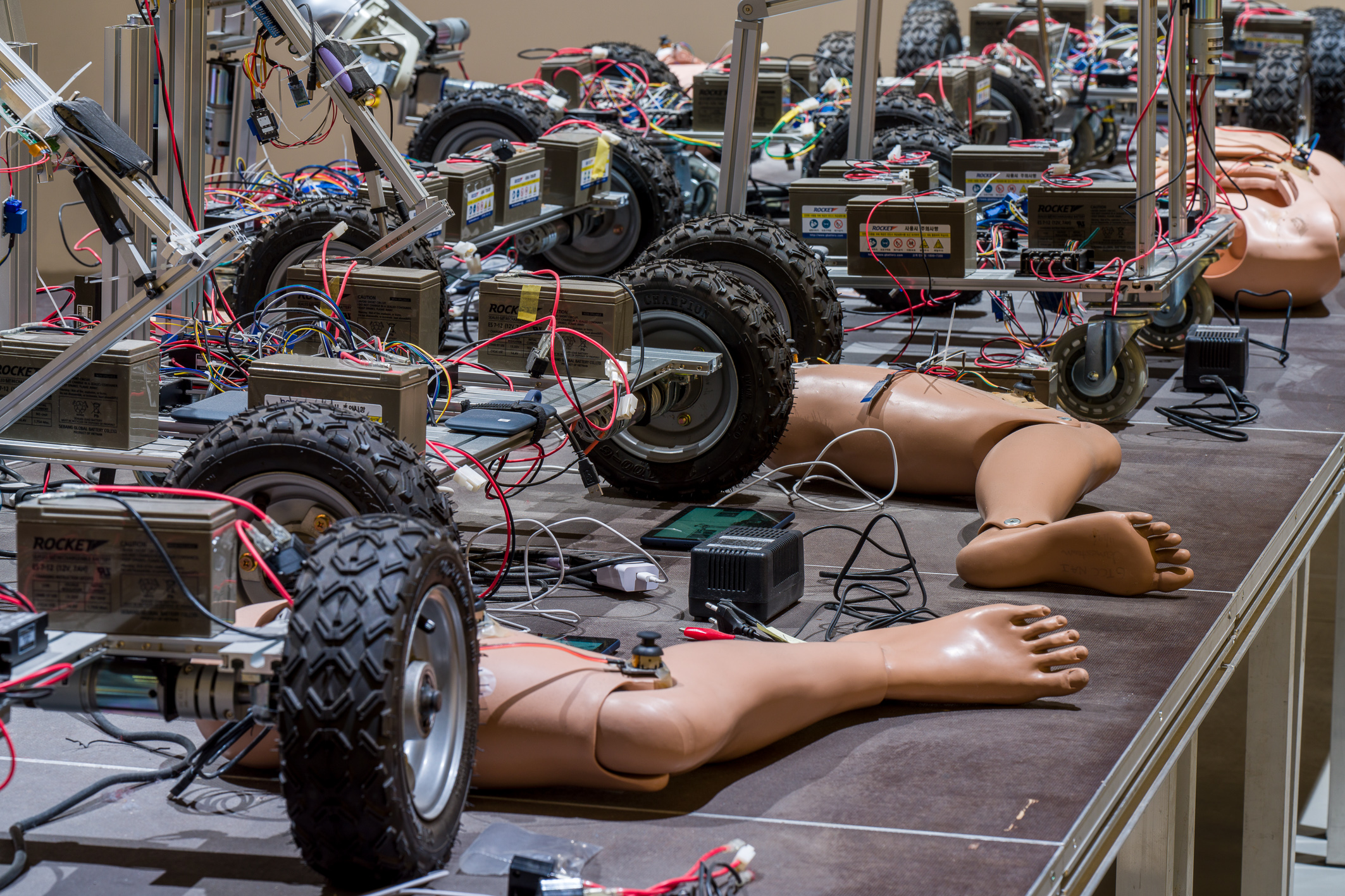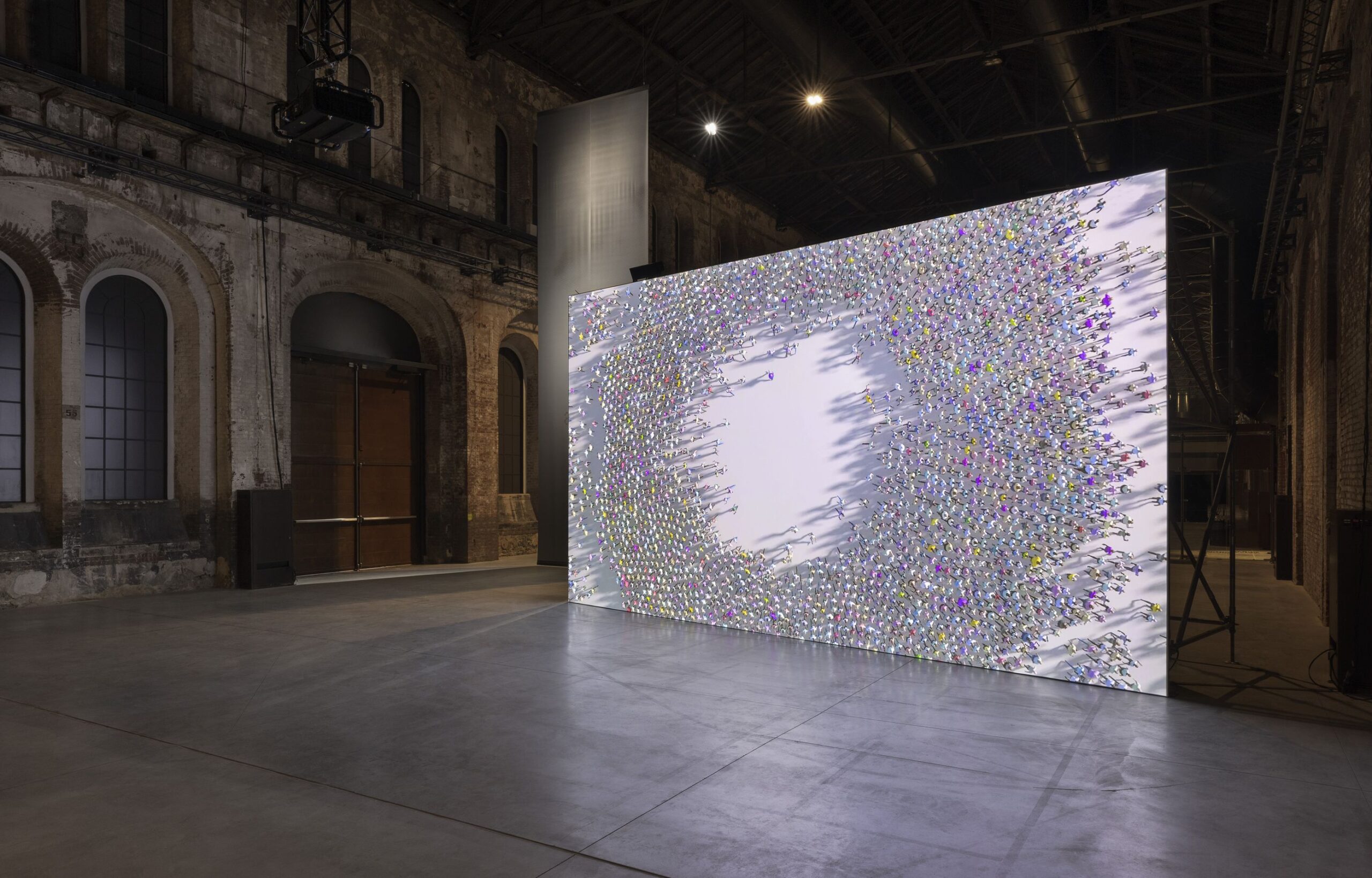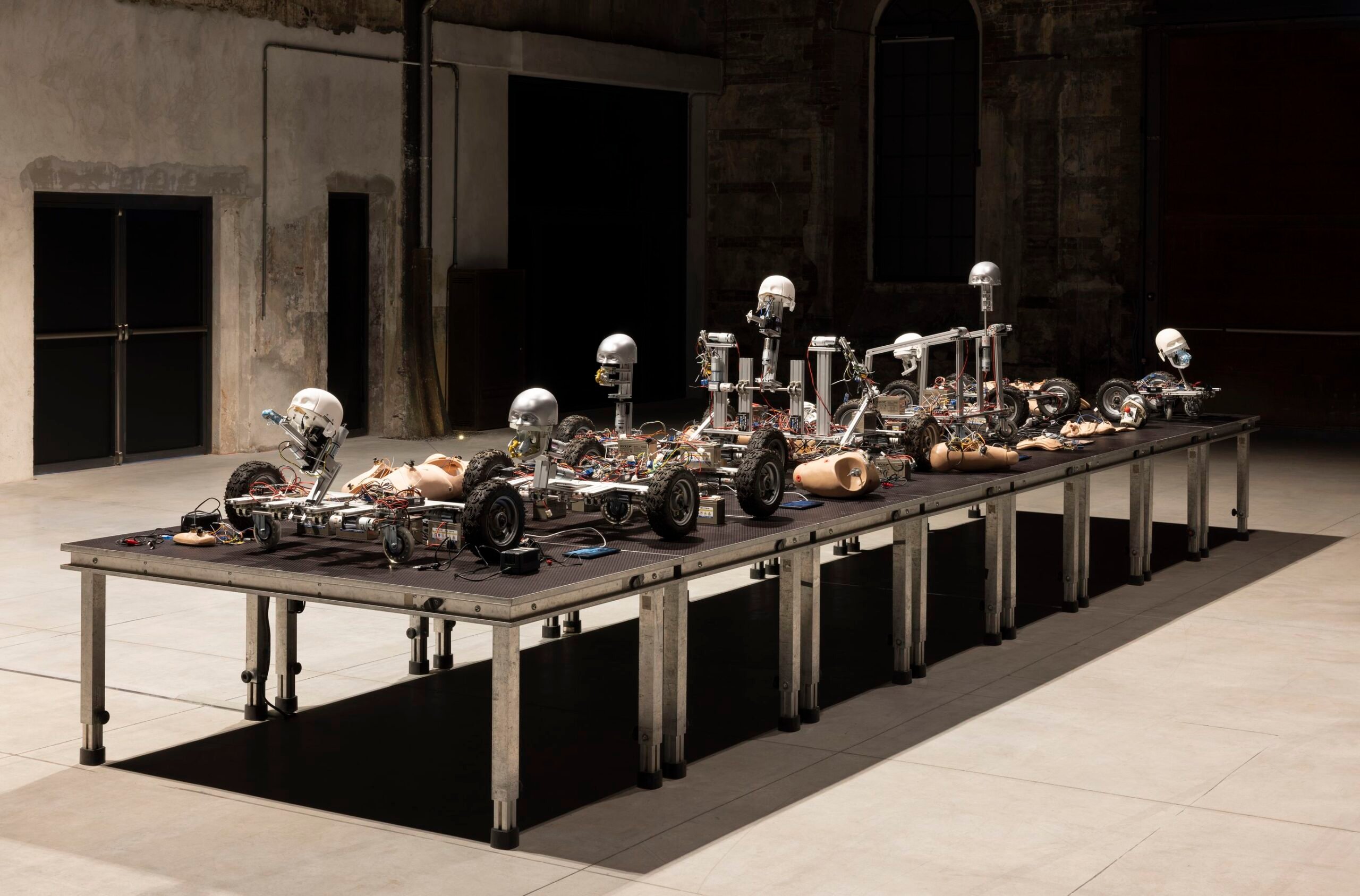What contours does the current collision between the digital sphere and the physical world have? The artists on show in Turin answer, from James Bridle to Paolo Cirio
“In science as in society, in politics as in education, in war as in commerce, new technologies do not just increase our capabilities but, for better or for worse, shape and direct them”. With this sort of axiom taken from his essay New dark agethe British artist and theorist James Bridle offers a more than lucid analysis of what perhaps best represents the beating heart of the critical issues of our time. In other words, the ever more incisive and cumbersome presence of new technologies in every aspect of our lives. And of course it’s no coincidence that Bridle himself is a part of Perfect behaviors. Life redesigned by the algorithmthe exhibition set up at the Officine Grandi Riparazioni in Turin which, until 25 June, tries in one way or another to address such a broad theme.

THE PERFECT BEHAVIORS EXHIBITION AT OGR
Curated by Giorgio Olivero, the exhibition makes use of the presence of six of the most attentive artists to this type of problem to highlight the consequences of those short circuits between the tangible world and the purely digital world that now determine our daily lives. A potentially interesting intuition, that of Olivero, which however fails to emerge in the best way. Set up in the spaces of Binari 1 and 2, the exhibition offers a corpus of six different works that turn their gaze towards the invisible but concrete imperfections capable of shaping the social – and non-social – fabric in which we move day after day. To welcome the public into this labyrinth made up of algorithms and glitches (the latter to be understood in a more conceptual than aesthetic sense) is tribesthe monumental video signed in 2019 by the collective of designers, developers and multimedia artists Universal Everything. Characterized by the staging of choreography as precise as it is worrying, the CGI work presents hordes of human beings intent on moving like impeccable automatons. An unstoppable wave of characters constantly kept under control, which brings to mind both the use of tools such as monitoring drones and the enormous flow of data that arises from our every action. Surveillance and manipulation are also some of the topics covered in Socialitythe layered multimedia work that Paolo Cirio conceived starting from a collection of data from over 20 thousand patents for devices, algorithms and interfaces registered over twenty years. A complex project that is articulated through an online site, from which it is possible to view and download the aforementioned patents, and the posting of illustrative posters on the walls of a very narrow corridor.
The content continues to follow

FROM EVA AND FRANCO MATTES TO BRENT WATANABE
It is the portrait of a humanity set apart from itself that offered by Perfect behaviors, a tendency of which we are both victims and architects and which often forces us to find alternative solutions to try to live in less constraining ways. This is what happens in The botsthe video installation of Eva and Franco Mattes in which some subjects talk about their dramatic work experiences alternating between one make-up tutorial and another (a ploy put into practice by various influencers and tiktokers to get around censorship and denounce alarming personal and collective situations). Subversive methodologies and hacking of various kinds constitute another fil rouge that runs through the exhibition itinerary presenting the hybrid cyberpunk creatures of Geumhyung Jeong – already known to the general public after the last Venice Biennale – the project Autonomous Trap 001 by James Bridle (in which the artist finds an analogical way to make certain hi-tech devices inefficient) and the most incisive work of the whole exhibition: San Andreas Streaming Deer CamOf Brent Watanabe.
By inserting the playable figure of a deer into the famous video game GTA Vthe American artist’s video installation awakens in the viewer that empathy that makes a man worthy of being defined in this way, focusing attention on the role of the animal in a highly anthropocentric era in which the human being and his innovations do not leave too much room for the other inhabitants of this planet.
To close the circle of the exhibition project in a certain sense is Teshthe amazing audio video performance presented by Lorem during the inauguration of the exhibition which uses Artificial Intelligence systems to reinterpret 21 years of dream transcriptions by the American artist and researcher Mirek Amendant Hardiker.

LIGHTS AND SHADOWS OF THE EXHIBITION AT THE OGR
Despite the good curatorial intentions, as a whole the exhibition does not seem entirely convincing, arousing perplexities that start primarily from its concept and then reach the context in which it has been inserted. Given the vastness and topicality of the subject, perhaps something more focused and conceptually less dispersive was expected, since it is really hard to find a basic homogeneity that goes beyond the aesthetics of the works. What makes the situation worse is also that sense catchy and excessive cleaning which distinguishes most of the works on display: connotations that appear in stark contrast both with the shapeless, dirty and underground nature of the very nature of the phenomenon under analysis and with the environment of the OGR, of an explicitly industrial matrix. In a similar operation what appears evident is unfortunately the desire to bring out that“wow effect” inherent in the works themselves with respect to the noblest search for a basic coherence. A bit like what happened during the impeccable performance of Lorem, penalized once again by an exhibition choice (dominated by the arrangement of numerous seats which effectively prevented the reading of the subtitles present in the projected video) which sacrificed the correct fruition of the performance in order to satisfy a certain type of public clearly out of context. Probably, however, it is above all the question posed by the curator himself in the event’s press release that is wrong. Instead of asking: “What happens when the world order is daily replaced, invisibly updated by technical evolution?”, it would have been better to ask what happens to artists and patrons when a certain type of collecting feels the urge to enter territories that catchy and refined they have very little.
Apart from everything, among the numerous doubts raised by the exhibition there is one certainty: that the times in which one tried to attach labels such as New Media Art to promote hard-to-sell works have passed abundantly.
Valerius Venusus

